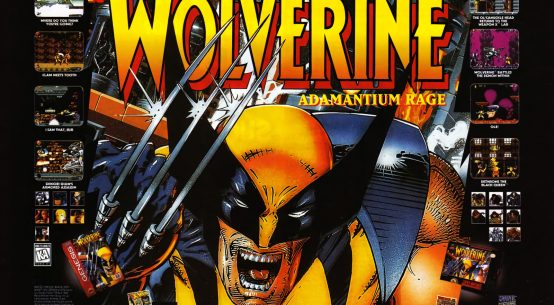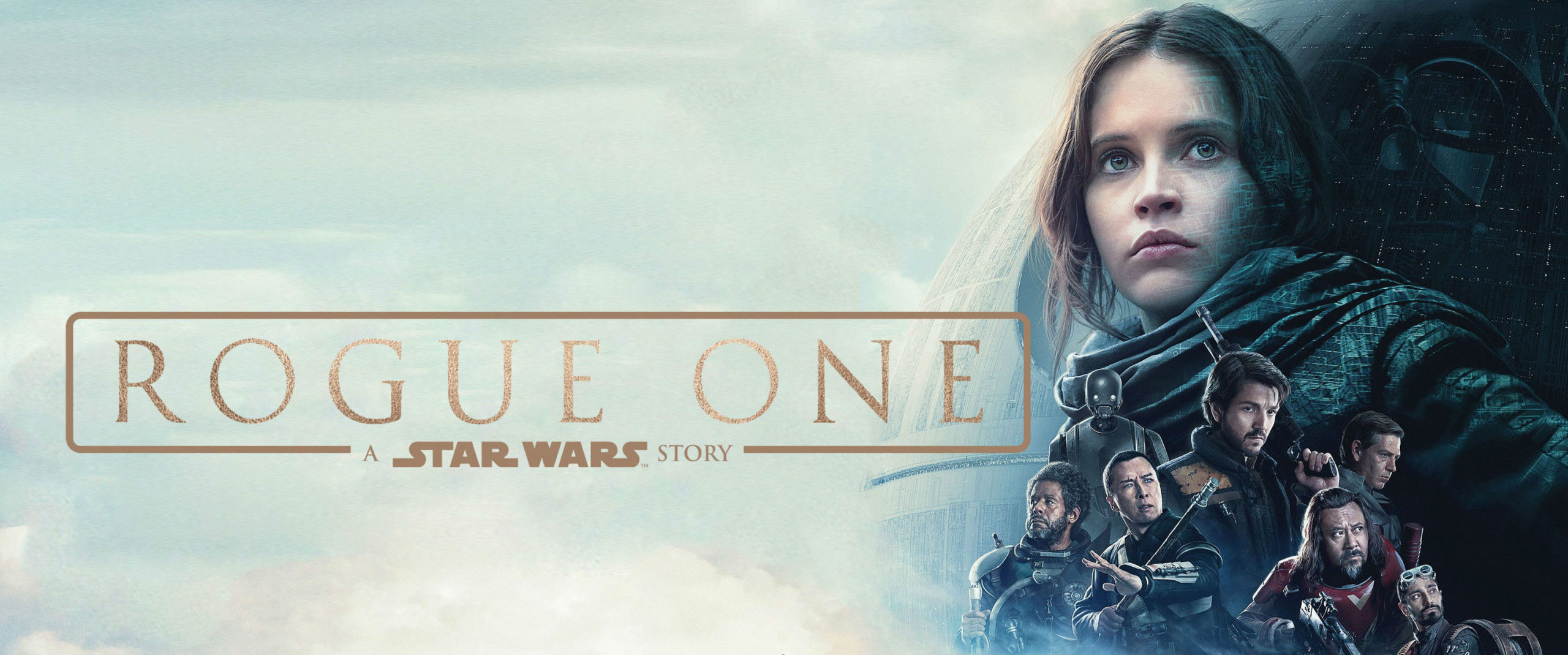
Review by Doug Waters
Edited by Sam Hughes
Directed by: Gareth Edwards
Composer: Michael Giacchino
Sound by: Skywalker Sound including Chris Scarabosio, David Acord and many others
Set towards the end of the somewhat 20-year gap in the Star Wars timeline between 2005’s Revenge of the Sith and 1977’s A New Hope, Rogue One tells the story of how a small group of heroes fought to steal the plans for the Death Star, plans that ultimately lead to it’s destruction at the hands of Luke Skywalker in A New Hope.
The first standalone story in what will become a series of anthology films, Rogue One introduces a load of new characters to the Star Wars universe including maverick, Jyn Erso (Felicity Jones), Imperial Director of Advanced Weapons Research, Orson Krennic (Ben Mendelsohn) and force sensitive warrior monk, Chirrut Îmwe (Donnie Yen) amongst many, many others. Fans of previous Star Wars films will also recognise the return and brief appearances of many noticeable and favourite characters including the likes of Darth Vader, Bail Organa (Princess Leia’s adoptive father) and even R2-D2 & C-3PO!
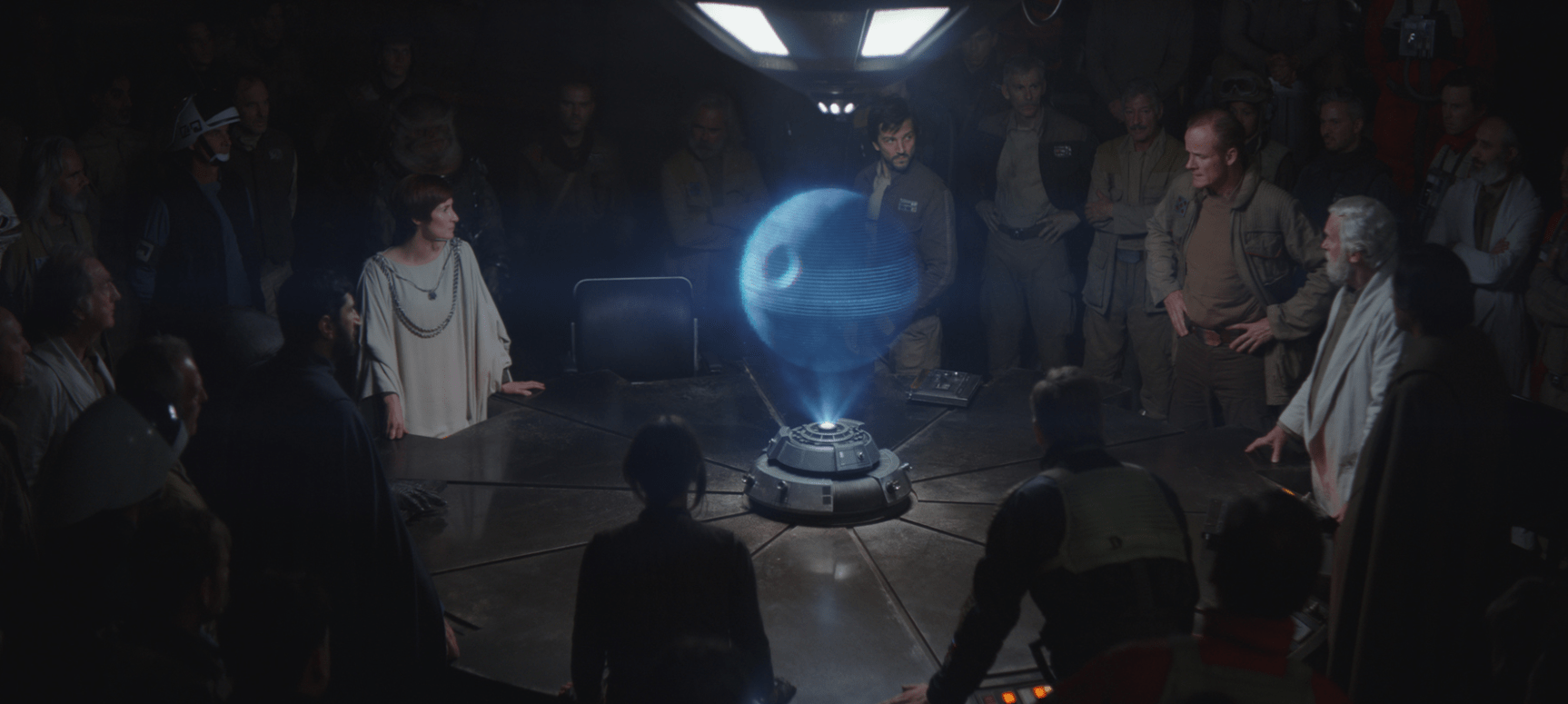
Sound Design
It’s undeniable that Star Wars has a signature sound, one could sit in front of a screen, eyes closed and still very quickly be able to tell what you were watching. Even though this title stands apart from the rest of the ‘Skywalker Saga’ films, the roots of it’s sound are firmly grounded in the foundations laid through Ben Burtt’s work on the original series. All of the signature sounds are there: the screech of a TIE fighter, blaster rifle shots, and the ignition of a lightsaber.
What was a very nice touch is how many of these sounds from the originals and prequels have been taken and adapted to change how we perceive other sources throughout the film. In particular it was interesting to compare the sounds of the Imperial Stormtrooper’s blaster rifles with those produced by the chosen weaponry of Baze Malbus, a freelance gunman who joins the effort to steal the Death Star plans. Over the course of the original trilogy, prequel trilogy and last year’s The Force Awakens, fans of the cinematic Star Wars universe will have subconsciously committing the unmistakable sound of ‘standard’ blaster fire to memory. Although Malbus’ gun might not look like much upon first glance, the sound it produces is far punchier, bearing much more weight than normal blasters; yet still sounding similar enough to be considered part of the same ‘family’ of weapons.
This subtle depth and layering that has been added, tells a story behind the weaponry; is this some older, less refined blaster that the character has become attached to over the course of a long life at war, or perhaps something that Malbus himself has modified. Ultimately the slight change to the blaster sounds that we know tell us more about Malbus’ particular choice of weapon, which in turn informs us more about who Malbus is as a character. An interesting lesson in characterisation through sound!
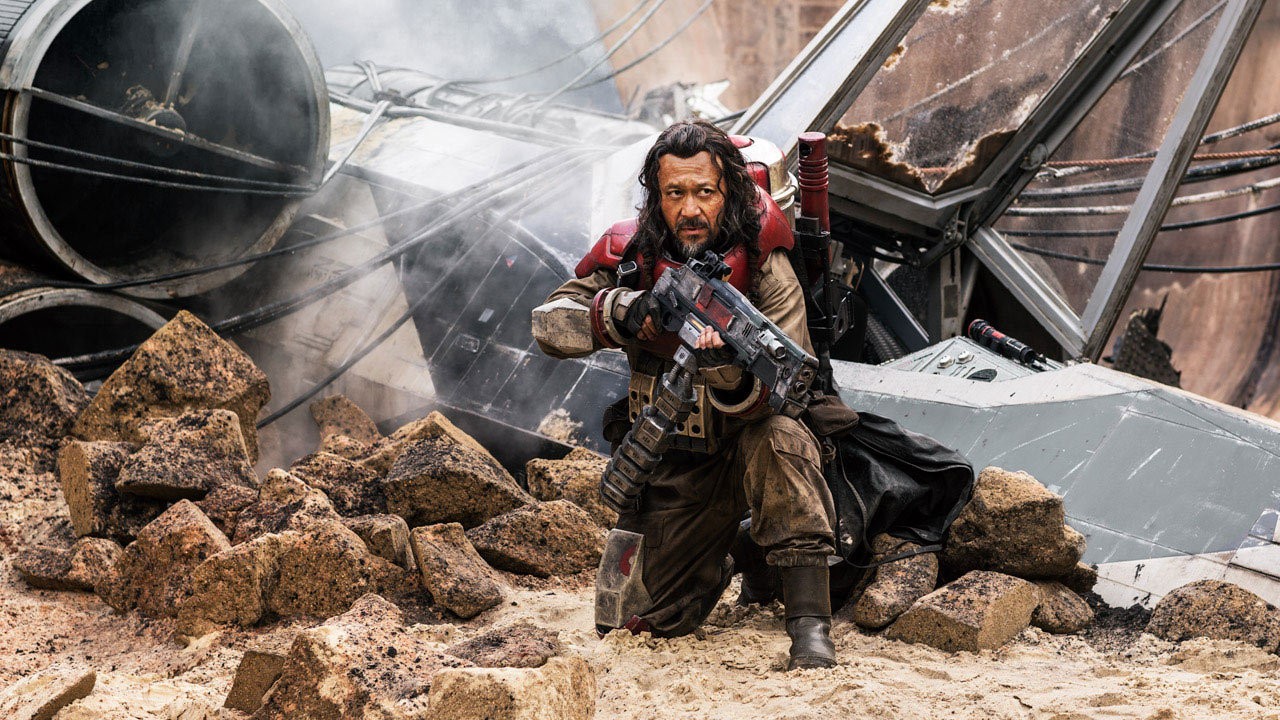
It’s been roughly 33 years since we as viewers have seen the insides of the Death Star on the big screen, so it was a very welcome surprise to once again see the interior designs of the space station brought to life on screen. However, the visuals only partially set the scene for moments set inside the Death Star; many of the films other scenes are also set inside other Imperial constructed locations that bear similar resemblance such as Star Destroyers or the research facility on the planet of Eadu. When we are presented with the first scene inside the Death Star, our realization of the fact is solidified by the chirping sounds of an MSE ‘Mouse’ Droid (you might remember the scene in A New Hope where Chewbacca scares one off!); the sounds of which, in the originals, are never heard anywhere else apart from on the Death Star. This is similarly done for scenes occurring in the rebel base on Yavin 4, also shown in A New Hope. These original sounds that viewers have learnt over years of watching the original trilogy are cleverly used to amazing effect to set the scenes of the film from shot to shot.
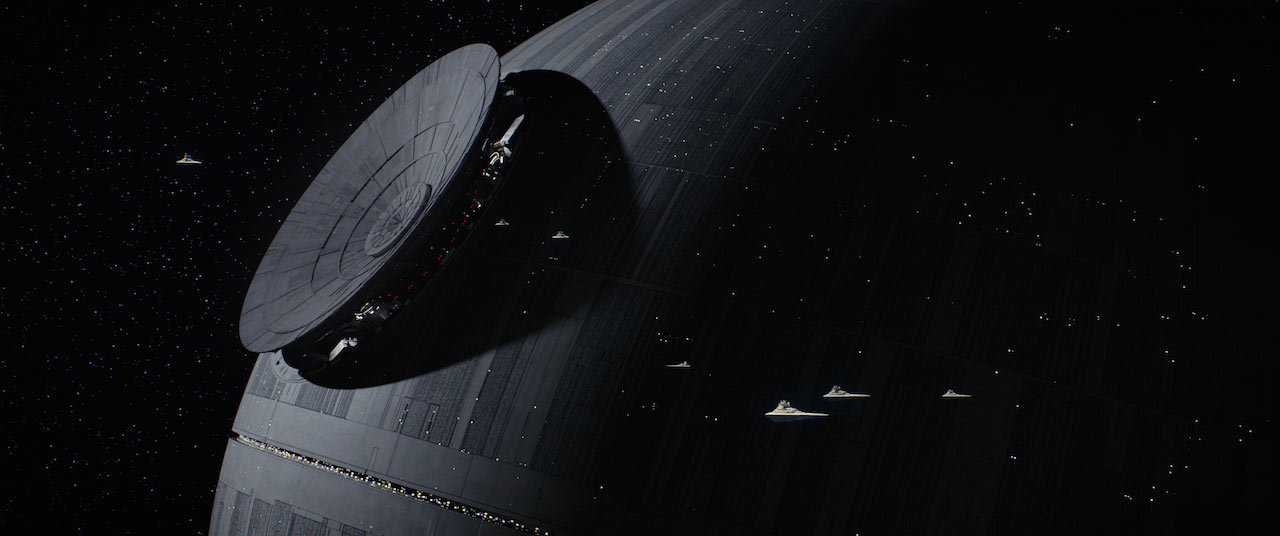
Music
Renowned and beloved composer John Williams has previously written the music for all other Star Wars films (not counting Kevin Kiner’s work on 2008’s animated venture Star Wars: The Clone Wars). It was interesting then to hear that he would not be returning to write the score for Rogue One. Back in 2015 it was initially reported that Alexandre Desplat would composer the music, having worked with director Gareth Edwards previously on 2014’s Godzilla. However, perhaps due to the reshoots that changed the film’s postproduction schedule, Desplat was no longer able to write the score. In September of this year it was announced that Michael Giacchino would be replacing Desplat. Coming onto the project hot off the heels of finishing the music for Marvel’s Doctor Strange, Giacchino apparently had only 4 ½ weeks to write the entire score!
The music matches well with the quality of any of the epic Star Wars scores that we’ve all come to know and love from previous films. We can at this point only assume that the music was recorded at Abbey Road Studios in London with The London Symphony Orchestra, as shown by the clip below and based on the fact that the scores for the Prequel Trilogy were recorded there and all 6 other film scores performed by the LSO. It’s entirely possible however, that it was recorded elsewhere, since last year’s The Force Awakens became the first Star Wars score to have been recorded in the United States and the first without the LSO.
With regards to the musical content, it sits very well in the now growing library of scores from the rest of the Star Wars films, effectively bridging the gap between the original and prequel trilogies by often borrowing and riffing on thematic ideas from both. It would be an interesting exercise to listen to the soundtracks in chronological order to show how they evolve and tell the story of the saga!
However, whilst it was nice touch to have recognisable themes play when equally memorable characters appeared on screen, it felt a little like this was the only borrowing of Williams’ work that should have occurred. At times it was highly distracting to hear the opening seconds of the ‘Skywalker’ theme, only to have it move onto some different melody than what was expected a few notes in! Moments like this occured continuously throughout the film, caused frequent disconnect with the visuals and a state of immersion.
For myself Rogue One was a chance to do something different to the very ‘fantastical’ ideas of the main films, yet the music seems to do anything but that. It’s not difficult to state that Star Wars has a very deep-set musical character and flair, but this isn’t necessarily a ‘traditional’ Star Wars title. The Empire is always characterised through pompous horns, strings and marching drums, The Rebels with solo brass and woodwind; the same musical pallets were used for the same things. Not that this is necessary a negative point in itself, but it might’ve been interesting to do something very different, only ever including Williams-esque themes when key characters appeared.
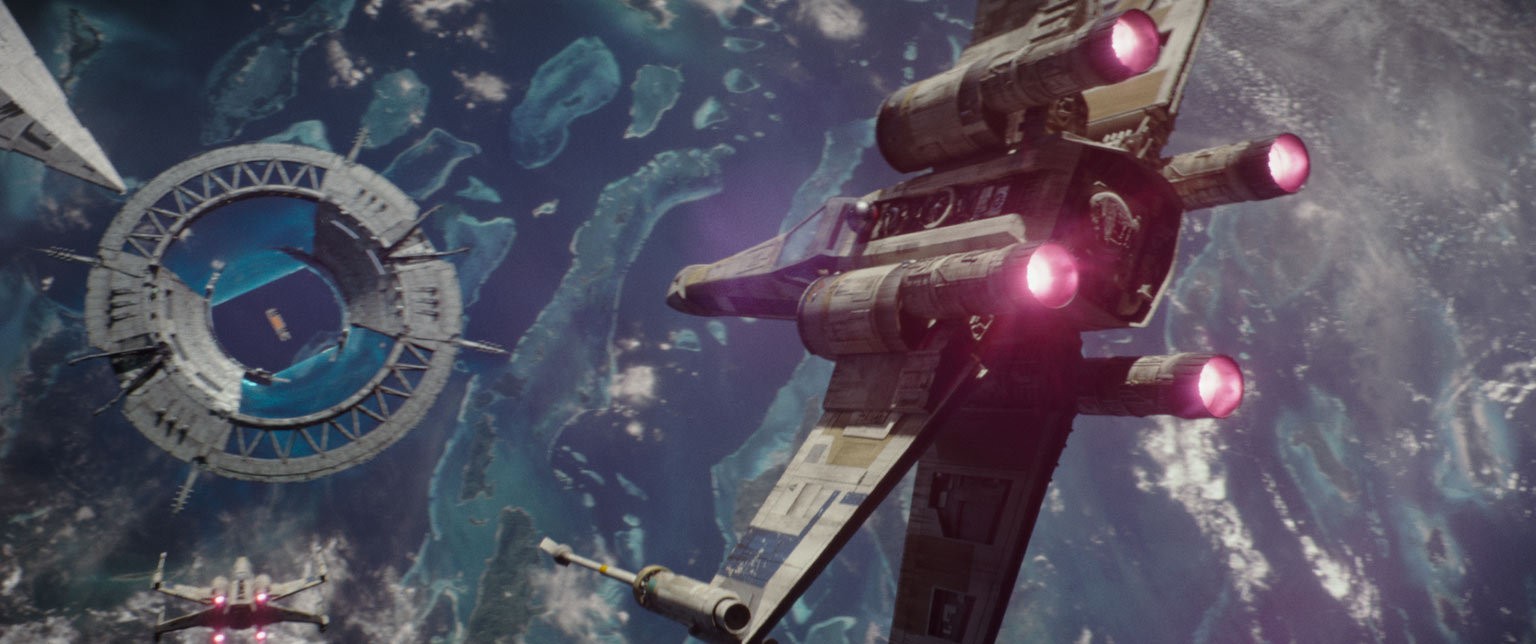
All-in-all there was just too much music in the film as well, being able to count maybe just a few minutes where there was musical silence; as one piece ended another started a second or so later. The sound and dialogue was rarely ever allowed to tell the story by itself, and there were certain moments that seemed to be screaming for musical silence. At times this lead to certain key moments seeming less impactful because the music was always there telling you what was or about to happen, even sometimes trying to force the audience to feel something rather than allowing space for them to do so at their own pace. The music also felt too dramatic or emotional at times, causing a disconnect with the visuals, and at others it was too melodic where it would have benefited from a simple drone. The fact that the music has been written in 4 ½ weeks is rather apparent, this of course isn’t Giacchino’s fault, it’s just unfortunate that he was only given this amount of time.
Dialogue
The dialogue throughout the film is largely faultless and there were only a few times the scripted lines didn’t seem to fit with a character. The one discrepancy I had with the dialogue was with the seeming lack of processing applied to the voice of K-2SO, an Imperial droid reprogrammed to serve the Rebel Alliance. Voice and motion-capture actor Alan Tudyk gives an excellent performance as the new lovable droid character in the series, but the final sound of the voice doesn’t seem to fit. K-2SO is a very imposing character, possessing quite a scary face and standing taller than any other member of the main cast, however his voice doesn’t seem to match any of these qualities. Perhaps this was intentional to show the effect of his reprogramming, however we never get to hear the voice of the other KX-series Security Droids in the film to be able to determine this. Ultimately his voice just doesn’t sound robotic enough, whilst one is able to get used to it over the course of the film, initially it’s a little jarring. I’d expected his voice to sound something akin to Legion from Mass Effect 2, but not as heavily processed.
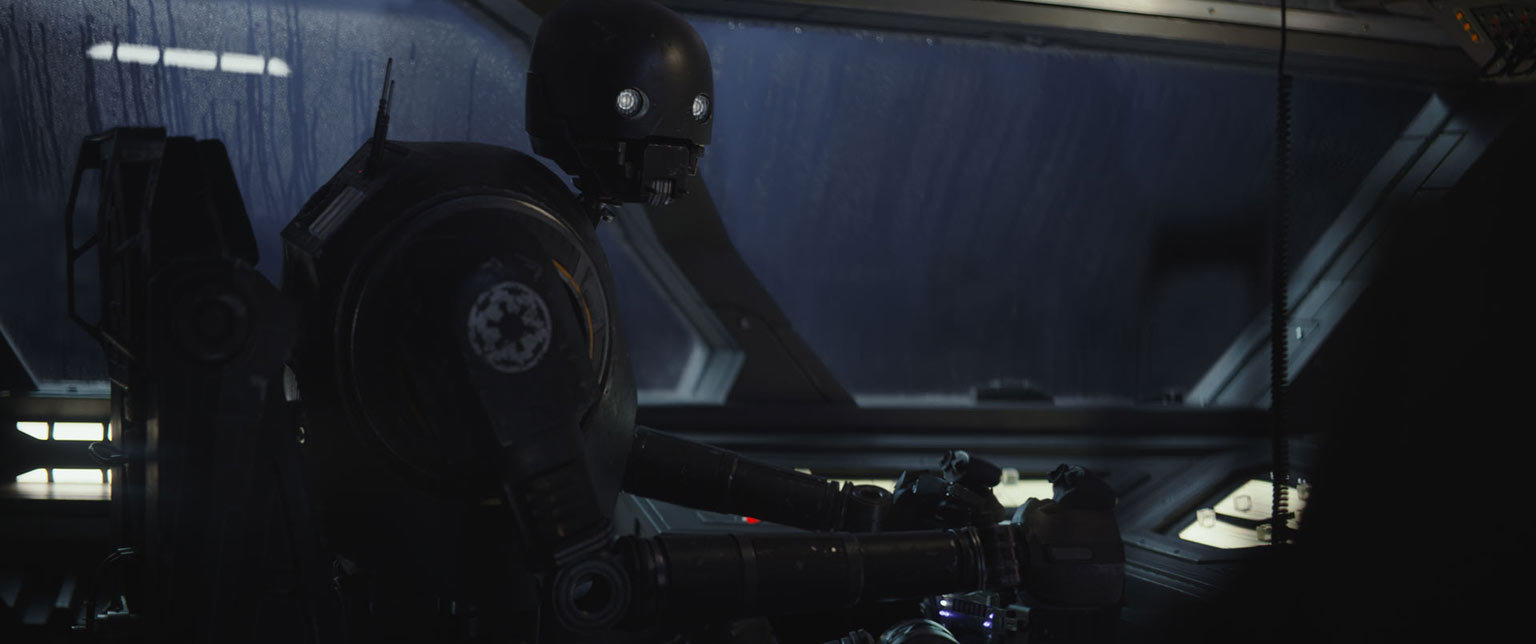
However, I cannot fault the performance Guy Henry has given in his role voicing Grand Moff Tarkin, perfectly emulating voice of the late Peter Cushing. And it was great to hear the voice of James Earl Jones as he once again reprised his role in voicing Darth Vader.
I can’t deny that Rogue One is a fun film if you’re a big fan of the ever growing Star Wars universe, and tells an interesting chapter in a much larger story. However I left the cinema feeling somewhat disappointed, it’s a film that doesn’t seem to add anything to the series and the ending felt like a cheap easy way out. Whilst the film felt long enough, not a lot seemed to happen as we hopped from yet one planet to the next and on; the first half an hour felt very messy as it jumped back and forth in time and between different locations. There were a lot of welcome references to other films and inclusion of key characters from the saga, but they didn’t really feel necessary, and without them I feel the film wouldn’t be able to stand on it’s own strengths.Whilst Guy Henry gave an excellent performance as a CGI Grand Moff Tarkin, there was just too much CGI Tarkin face time, it ruined the illusion when he was in scenes involving so many other real faces. It was also unfortunate that there was a substantial lack of character development with the main cast that ultimately lead to a very lack lustre ending, leaving it feeling a bit empty.
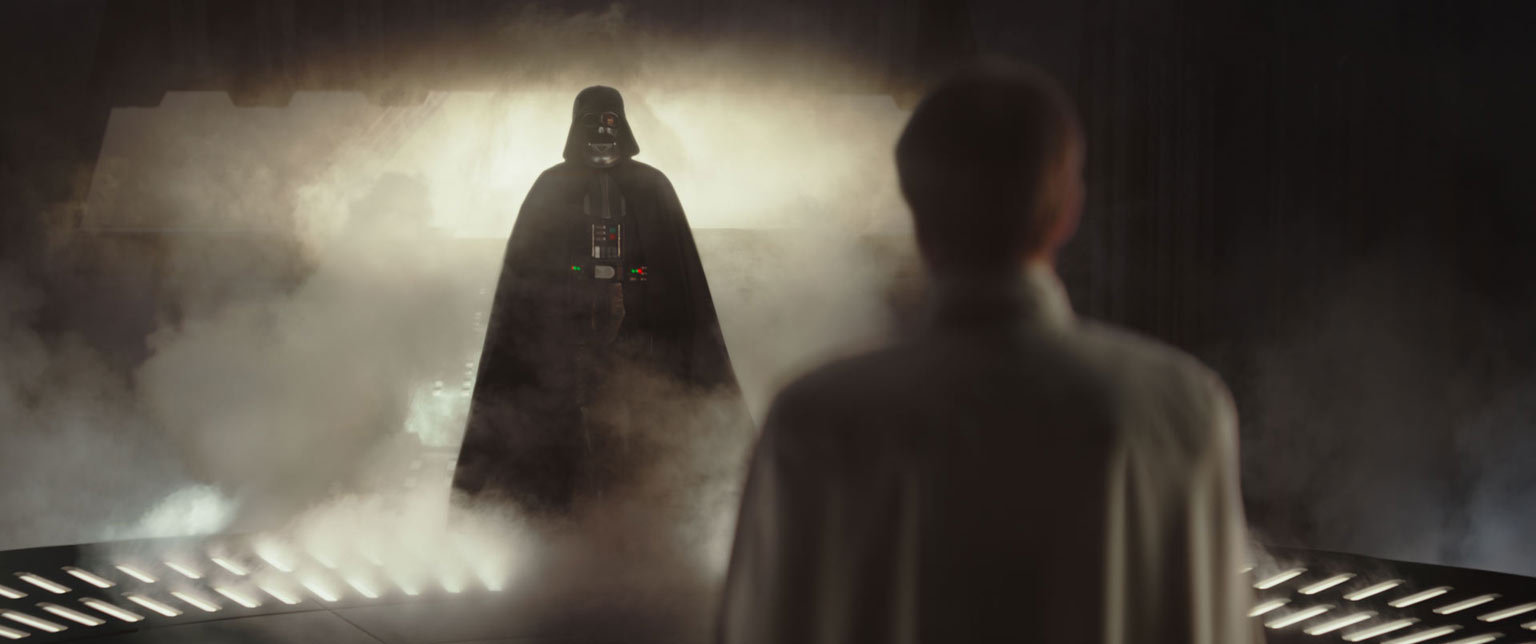
There is nothing I can fault with the sound design and very little with the dialogue, however I feel the music and how it was used could’ve been improved upon. As a viewer I need breathing room to be allowed to take in at my own pace the emotion and impact of scene. As I’ve already stated the music too closely resembled Williams’ work but was also too noticeably different during noticeable melodic and thematic parts. I think this film posed a real opportunity to do something different, I would’ve loved to hear something more synthetic and processed but still with a certain ‘Star-Wars-ness’ about it.
But I implore you to go and see Rogue One and form your own opinions of it; and i’m sure if you’re as much of a fan of the previous films as I am, then there’s probably nothing I could say that would deter you! I’d be very interested to hear your thoughts on the sound design, music, dialogue and the entire film in general!
LINKS
Official
We hope you enjoyed Doug’s review, check out others in our Reviews section. Don’t forget to sign up to our Monthly Newsletter to make sure you don’t miss out on our reviews and interviews. We’re also running a Patreon campaign to make sure we can keep bringing you regular, high quality content if you’re feeling generous! Thanks for even sharing!
The Sound Architect



